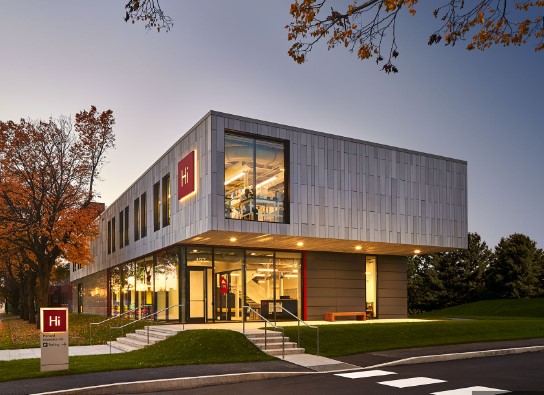
How Commercial Modular Buildings Are Revolutionizing the Construction Industry
Key Takeaways:
- Understand the key benefits of commercial modular buildings.
- Learn how modular construction is accelerating project timelines.
- Discover the environmental advantages of modular buildings.
- Explore real-life examples of successful modular construction projects.
Table of Contents:
- Introduction
- Key Benefits of Commercial Modular Buildings
- How Modular Construction Accelerates Timelines
- Environmental Advantages
- Conclusion
Introduction
Commercial modular buildings have recently gained significant traction in the construction industry. These prefabricated structures, constructed off-site in controlled environments and assembled at the final location, offer numerous advantages over traditional building methods. They promise faster project completion times, lower costs, and a smaller environmental footprint. Commercial modular buildings are positioned to lead the way as businesses and developers strive for more efficient and sustainable methods. This article explores how modular buildings are revolutionizing the construction industry and why they are becoming a preferred choice for many.
The precision and quality control afforded by off-site construction result in buildings that meet high durability and safety standards. Additionally, the flexibility of modular design allows for easy customization and scalability, catering to a wide range of business needs, from office spaces to healthcare facilities. Modular construction also minimizes the impact on surrounding communities with less on-site disruption and a reduced need for extensive labor. Advances in technology and materials are continually enhancing the capabilities and aesthetics of modular buildings, making them an attractive option for modern architectural designs. With the increasing need for eco-friendly and affordable construction options, commercial modular buildings are projected to speed up, changing the overall look of the industry.
Key Benefits of Commercial Modular Buildings
The concept of commercial modular buildings is transforming the way construction projects are approached. One of the most compelling benefits is the speed at which these buildings can be completed. Modular construction allows different portions of a building to be built simultaneously in a controlled indoor environment, dramatically speeding up the process. This concurrent building approach shortens the project timeline and reduces labor costs, ensuring businesses can use their new spaces sooner.
Another significant advantage is cost savings. Modular construction reduces labor costs and minimizes the likelihood of costly delays due to weather or other unpredictable factors. Additionally, the factory setting allows for bulk purchasing materials and equipment, leading to further financial savings. Companies can allocate these savings to different business areas, enhancing operational efficiency and profitability.
Furthermore, modular buildings offer excellent quality control. Since the components are constructed in a factory, they undergo rigorous inspections to ensure they meet high standards before being transported to the site. This meticulous oversight ensures fewer defects, higher-quality finishes, and less on-site construction waste. Quality control measures adhered to in the factory often exceed those at traditional construction sites, resulting in superior building integrity and performance.
How Modular Construction Accelerates Timelines
One of the primary reasons for the growing popularity of modular construction is the significantly reduced project timelines. Traditional construction methods often need more time due to adverse weather conditions, labor shortages, and material supply issues. Conversely, modular buildings are constructed indoors, shielding them from weather disruptions and enabling a more predictable schedule. This indoor setting allows continuous work, uninhibited by rain, snow, or extreme temperatures, ensuring project deadlines are met.
Simultaneously, constructing on-site foundations and off-site building modules contributes to faster project completion. For example, a hotel chain that employed modular construction for new locations reported cutting their typical build time in half. These hotels could open doors and generate revenue much sooner than if they had used traditional construction methods. This rapid completion time is particularly beneficial in competitive markets where being the first to open can provide vital advantages.
This rapid completion time is especially beneficial for sectors that require quick occupancy, such as healthcare and education. Schools and hospitals can have new buildings up and running quickly, ensuring their services reach communities without unnecessary delays. In emergency scenarios, such as natural disasters or pandemics, the agility of modular construction is invaluable, enabling rapid deployment of essential facilities like clinics, classrooms, and housing units.
Read also: Essential Steps for Successful Warehouse Construction in Calgary
Environmental Advantages
The environmental benefits of modular construction are compelling. Traditional construction projects generate significant waste, which often ends up in landfills. In contrast, the factory-controlled environment of modular construction allows for better waste management, material recycling, and efficient use of resources. They have reduced waste, resulting in less environmental impact and lower disposal costs.
Moreover, factory construction results in more energy-efficient buildings. Improved insulation, reduced thermal bridging, and advanced HVAC systems can be incorporated into the design, reducing the building’s overall energy consumption. This precision also ensures that each module fits seamlessly with the others, minimizing gaps and potential energy loss points.
Using sustainable materials and construction methods aligns modular buildings with modern environmental standards. Many modular buildings earn green certifications, contributing to a company’s sustainability goals.
For instance, an office complex opted for modular construction using sustainable materials throughout the building process. By doing so, it demonstrates its commitment to environmental stewardship and significantly reducing its carbon footprint. Such achievements benefit the environment and enhance the company’s reputation as a forward-thinking and responsible entity.
Conclusion
As the construction industry continues to evolve, commercial modular buildings are proving to be a revolutionary force. With advantages like faster project timelines, cost savings, stringent quality control, and a lower environmental impact, it’s no surprise that modular construction is gaining widespread acceptance. Businesses and developers looking for efficient, sustainable, high-quality construction solutions increasingly turn to modular buildings. This innovative approach shapes the future of construction and sets new standards for what can be achieved.
Overall, the rise of commercial modular buildings represents a significant shift towards more efficient, cost-effective, and environmentally conscious construction methods. As more companies embrace these benefits, modular construction will likely become an industry norm, continually pushing the boundaries of what’s possible in the world of building and development.






